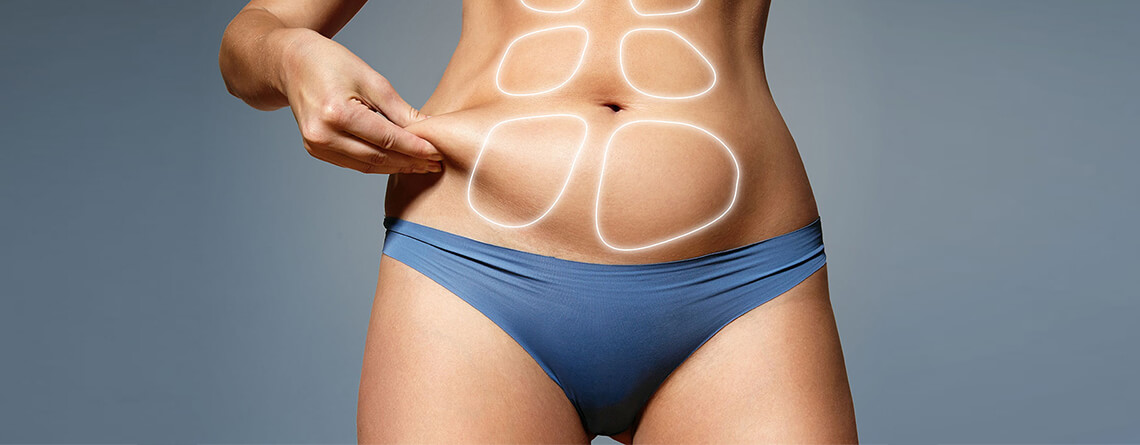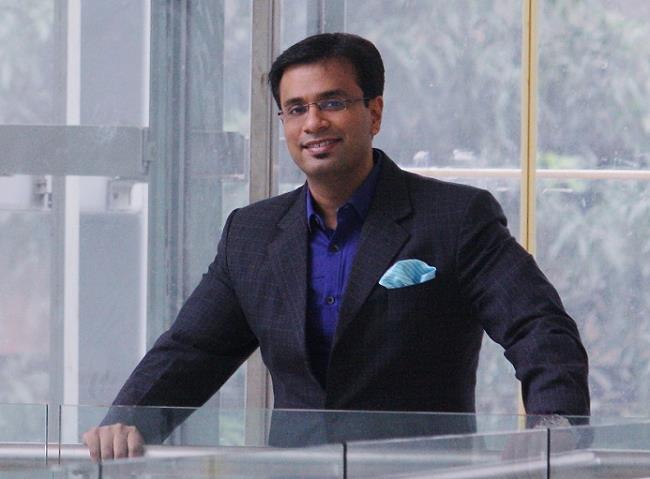Liposuction, also known as lipoplasty or suction-assisted lipectomy, is a cosmetic surgical procedure that is performed to remove excess fat from specific areas of the body. This procedure is usually done by specialized cosmetic surgeons, to enhance body contours and achieve a more proportionate figure.
How Does Liposuction Work?
Liposuction is usually performed in a liposuction clinic by a specialist to reduce fat in certain specific areas of the body.
Typically, the surgeon uses a thin, hollow tube, called a cannula, to remove excess fat from specific areas of the body. He makes an incision through which he inserts this device, and uses a vacuum to suction out the fat.
There are many options when it comes to liposuction techniques, which patients are free to choose upon the doctor’s advice. Some of these techniques are traditional liposuction, tumescent liposuction, ultrasound-assisted liposuction, and laser-assisted liposuction.
In traditional liposuction, the surgeon uses a cannula and vacuum to remove excess fat. In Tumescent liposuction the surgeon injects a large amount of local anesthesia and a solution that helps break up the fat before removing it. Ultrasound-assisted liposuction uses ultrasound waves to break up the fat before it is removed and in Laser-assisted liposuction, a laser is used to break up the fat before it is removed.
Who is a Good Candidate for Liposuction? / Who needs Liposuction
Patients who have a specific area of fat that is resisting diet and/ or exercise make good candidates for liposuction. Generally, the patient should be at or near their ideal body weight for the procedure to be carried out.
It is important to note that liposuction is not necessarily a weight loss solution, neither is it the correct treatment to address cellulite and/ or get rid of loose sagging skin and therefore should not be used as a substitute for a healthy diet and regular exercise.
Professionals typically recommend it for people who have already made efforts to lose weight through diet and exercise but have been unsuccessful in achieving their desired results in specific areas.
Good candidates for liposuction are typically people who:
Are at or near their ideal body weight: As mentioned above, liposuction is not the most suitable process to lose weight and is not recommended for people who are significantly overweight. Rather, the procedure is designed for people who have already genuinely tried to lose weight through other healthy means like dieting and exercising.
The procedure is scheduled to remove localized pockets of fat that have not responded to diet and exercise, for people who are at or near their ideal body weight. If a person is significantly obese, suitable weight loss procedures such as bariatric surgery may be recommended.
Patients should also know that liposuction is not a substitute for a healthy lifestyle. In order to maintain the effects of the procedure, they should maintain a healthy diet and exercise regularly.
Have good skin elasticity: Usually, the skin remains loose when fat is removed through any means, including liposuction. The patient should have good skin elasticity that is able to contract and conform to the new contours of the body once the procedure is done.
For this to be determined, the plastic surgeon will evaluate the patent skin’s elasticity during the consultation and discuss about other factors such as the benefits and potential risks of going through with the procedure.
If a person’s skin elasticity is poor, another alternative such as tummy tuck, or skin tightening treatments may be recommended to achieve the desired results.
Have localized pockets of fat that are resistant to diet and exercise: Liposuction is designed for people with localized pockets of fat that do not respond to dieting and exercising. This means that for a patient to opt for liposuction, they should genuinely have sought other means first.
Professionals do not recommend it as a substitute for a healthy lifestyle or for people who are significantly overweight or obese because it is not intended to remove large amounts of fat. It is a contouring procedure that is designed to sculpt and shape the body by removing small to moderate amounts of fat.
Even after the procedure, the patients should build and maintain healthy weight habits such as a regimen for dieting and exercising to prevent a build-up of fat deposits in the same areas after the procedure.
Are in good overall health: Just like any other surgical procedure, liposuction comes with its own risks of complications that may be worsened by any prior health issues. This makes it an important factor for a liposuction candidate to be healthy enough to undergo the procedure.
During the initial consultation, The plastic surgeon will evaluate the patient’s medical history, current health status, and any other potential health concerns including medications and supplements they may be taking.
If the candidate shows any sign of illness or is found with certain medical conditions such as heart disease, diabetes, or a weakened immune system, the surgeon would not recommend going thorough with the procedure as these conditions can increase the risk of complications.
Patients are urged to be open and honest with their healthcare provider about any health issues, allergies, or medications to ensure a safe and successful outcome.
Have realistic expectations: Before a patient undergoes a liposuction procedure, they should understand what it is, what it can do, and what it cannot do to avoid false expectations and disappointing outcomes.
For starters, patients should understand that liposuction may produce significantly impressive improvements in body contour, but it is not a magic solution, and cannot guarantee perfect results.
They should also know that it is not necessarily a weight loss procedure, rather, it is done to get rid of the stubborn fat that still remains even after religiously exercising and dieting.
The amount of fat that can be safely removed during liposuction is limited, and it is important to understand that the final results will depend on factors such as the patient’s skin elasticity, body composition, and the specific areas treated.
A plastic surgeon will discuss both the potential benefits and risks of liposuction during the consultation and provide an honest assessment of what can be achieved with the procedure.
What Areas of the Body Can Be Treated with Liposuction?
Liposuction can be used to remove excess fat from almost any area of the body, including the abdomen, hips, thighs, buttocks, back, arms, and neck. The most commonly treated areas are the abdomen and thighs.
Benefits of Liposuction
Liposuction is mainly seen as a cosmetic procedure to improve the appearance of the body, which comes with multiple advantages. Similarly, it has multiple medical benefits such as improving the appearance of certain conditions like lipomas (benign fatty tumors) and gynecomastia (enlarged male breasts).
Here are more potential benefits of liposuction;
Improved body shape: Liposuction is done to remove the excess stubborn fat from different parts of the body including the tummy, arms, buttocks, thighs, and hips, which can help contour and shape the body into a more aesthetically pleasing appearance.
It is important that patients understand that liposuction is neither a substitute for a healthy diet and exercise nor a weight loss solution. Rather, it is best suited for people who are already near their ideal weight but have specific areas of stubborn fat that are resistant to traditional weight loss methods.
Boosted confidence: Confidence starts from within. When someone doesn’t like how they look because of excess weight, it takes a toll on their self-esteem and self-confidence. Unfortunately, this is the case with many individuals in India.
Sometimes even with regular exercise and a strict diet, some people still find it hard to lose weight in certain areas of their bodies such as the arm, tummy, neck, and hips. In this case, a liposuction may come in handy.
Many people who undergo the procedure report an increase in self-esteem and confidence as they feel more comfortable and satisfied with their appearance.
However, patients should understand that while liposuction can improve their physical shape and appearance, which in turn can boost their confidence, it may not be the proper treatment for underlying psychological issues.
Patients should have realistic expectations about the outcome of the treatment and consult with a qualified professional to determine if liposuction is the appropriate option for their individual needs and goals.
Health benefits: Many people in Mumbai turn to Liposuction as a cosmetic procedure, to remove excess fat from different parts of their body and improve the contours. Similarly, many people are recommended liposuction for health benefits, especially, those who are overweight or obese.
Excess fat in the body increases the risk of health problems such as diabetes, high blood pressure, and heart disease. By reducing excess fat through liposuction, the risks of these conditions can also be reduced to some extent.
It should be noted that liposuction is not a weight loss procedure or a cure for other underlying health conditions. Individuals who have these conditions should consult with their healthcare provider to determine the best option for their goals and health issues.
Quick results: Another reason why liposuction is a popular procedure in India and beyond is that it can provide relatively quick results compared to other methods of weight loss. After the procedure, patients can immediately see a noticeable improvement in their body shape.
Unlike traditional weight loss methods, which can take months or even years for results to be noticeable, liposuction provides a more immediate improvement in body shape, with the full effects of the procedure starting to be seen after just a few weeks, as the swelling subsides and the body completely heals.
The recovery process is different and unique to each patient. Some patients recover faster while others take more time. This is due to some factors such as the individual’s overall health, the extent of the procedure, as well as how a person takes care of themselves after the treatment.
As advised by the liposuction clinic, it is also important to follow all the instructions given by the plastic surgeon before, during, and after the procedure. Following a healthy diet and regular exercise are also vital to achieving and maintaining the desired goal. Failure to adhere to these instructions may cause fat to start depositing right back into the treatment areas.
Long-lasting results: Liposuction results can be long-lasting if patients maintain a healthy lifestyle and continue to exercise and eat a healthy diet even after the procedure.
Liposuction is an effective way to remove stubborn pockets of fat that resist exercise and diets but it is not a permanent solution to this kind of weight loss, and so it can’t prevent future weight gain.
If the patient continues to eat excess calories and doesn’t engage in regular exercise after the procedure, they are more likely to eventually develop new fat deposits in the same or other areas of their body.
However, if the patient is committed to living and maintaining a healthy lifestyle that involves a balanced diet and regular exercise, then the results of liposuction can be long-lasting. By maintaining a healthy weight, patients can avoid the development of new fat deposits and help to preserve the results of their liposuction procedure.
It’s important to also remember that the results of liposuction and how long they last will vary from one individual to another. Some factors that make this difference are body type, age, and self-care.
Risks of Liposuction
While liposuction is an effective procedure and always has almost 100% guaranteed results, it carries its own risks and complications. Some potential risks of liposuction are:
Infection: Any medical or cosmetic procedures that involve surgeries and injections are more prone to infections. This is because the openings or incisions provide an entry spot for germs and bacteria that causes infections.
Liposuction is a surgical procedure, which means it is also vulnerable to the risk of infections. If they occur, patients may experience symptoms such as fever, redness, swelling, and discharge.
Excessive bleeding: Excessive bleeding during surgery is another common symptom and liposuction is not an exception. The procedure involves making incisions to remove fat, which in some cases may result in excessive bleeding. If this happens, additional surgery may be necessary to stop the bleeding.
Fluid accumulation: Following liposuction, fluid can accumulate under the skin, resulting in swelling and discomfort. Treatment for this includes prescribed medication or draining of the fluid.
Numbness or nerve damage: Liposuction can cause numbness or nerve damage in the area where the procedure was performed. This can be temporary or permanent.
Skin irregularities: Liposuction can result in uneven contours or dimpling of the skin in the treated area.
Anesthesia complications: During liposuction, the practitioner administers anesthesia to make the process painless and comfortable. In some cases, anesthesia has been reported to cause complications such as allergic reactions, breathing difficulties, or heart problems.
That is why it is important for the plastic surgeon to inquire about any health complications and for the patients to be open to discussing this in order to minimize or prevent risks like anesthesia complications.
Blood clots: Any surgery carries a risk of blood clots. If they are not paid attention to, they can travel to delicate parts of the body such as the lungs or brain, which can be life-threatening.
Scarring: Any cosmetic or medical surgery always carries a risk of scarring. During a surgical process, including liposuction, the surgeon makes small incisions, through which he can work to perform the procedure. While this can achieve the desired goals, it may result in scaring. The surgical site may leave a scar after healing. Most of the time, these scars are usually small and inconspicuous. However, they can be more noticeable in some cases.
A professional cosmetic surgeon should explain all these potential risks as well as the benefits to the patient, and well-advice on the best procedure to achieve the desired goal with minimal complications.
.jpg)
What is the Recovery Process like after Liposuction?
The recovery process after liposuction is different from one person to another. It can vary depending on the extent of the procedure, the areas of the body that were treated, and how well a patient adheres to postoperative instructions and takes care of their bodies long after the surgery.
If everything goes as planned, most patients are able to return to work and their normal daily lives within a week or two after the procedure. However, full recovery can take several weeks to several months.
During the first few days, patients may experience swelling, bruising, and discomfort in the treated areas. To relieve these symptoms, the surgeon may recommend wearing a compression garment to help reduce swelling and promote healing.
.jpg)
Here are some general tips for a smoother recovery from liposuction:
- Following the surgeon’s post-operative instructions closely will help promote faster healing and optimal results.
- Taking it easy and avoiding strenuous activities for at least the first few days helps prevent injuries to the surgical areas, which can stretch recovery time. Patients are encouraged to take light walks to promote blood circulation.
- Wearing compression garments as instructed by the surgeon help to reduce swelling and promote healing.
- Hydration and a healthy diet are the main keys to supporting full recovery and long-lasting results.
- Patients may also need to avoid smoking and alcohol consumption for several weeks after surgery, as these can delay healing.
- Attending all scheduled follow-up appointments is mandatory to monitor the healing and ensure no complications pop up.


